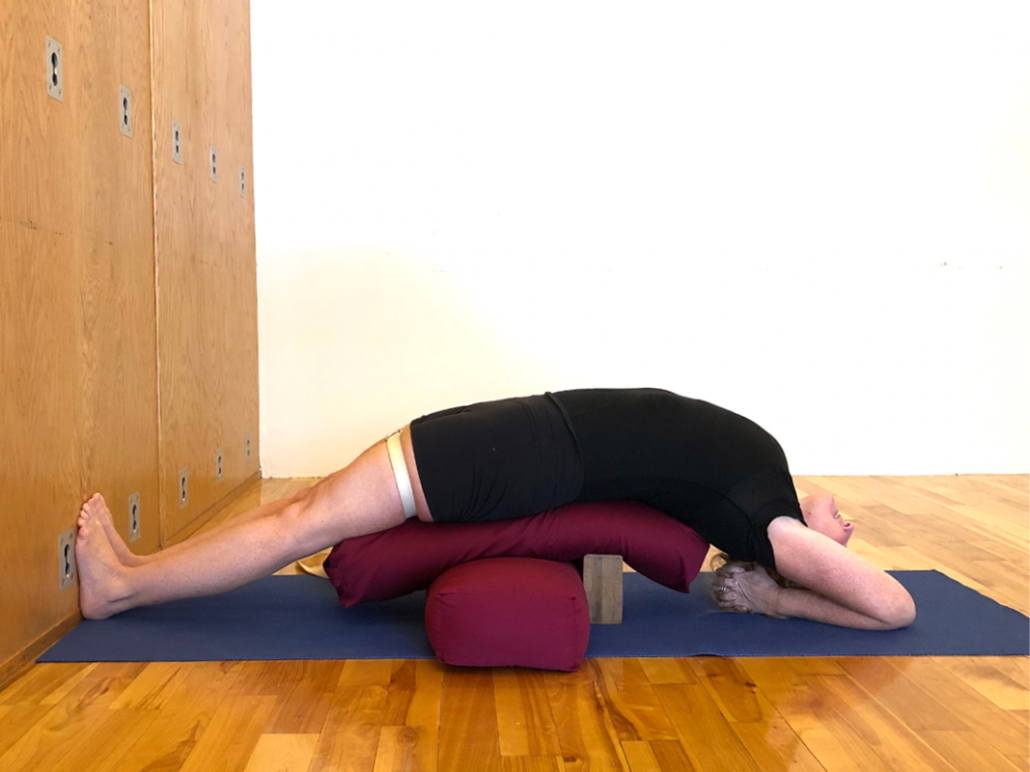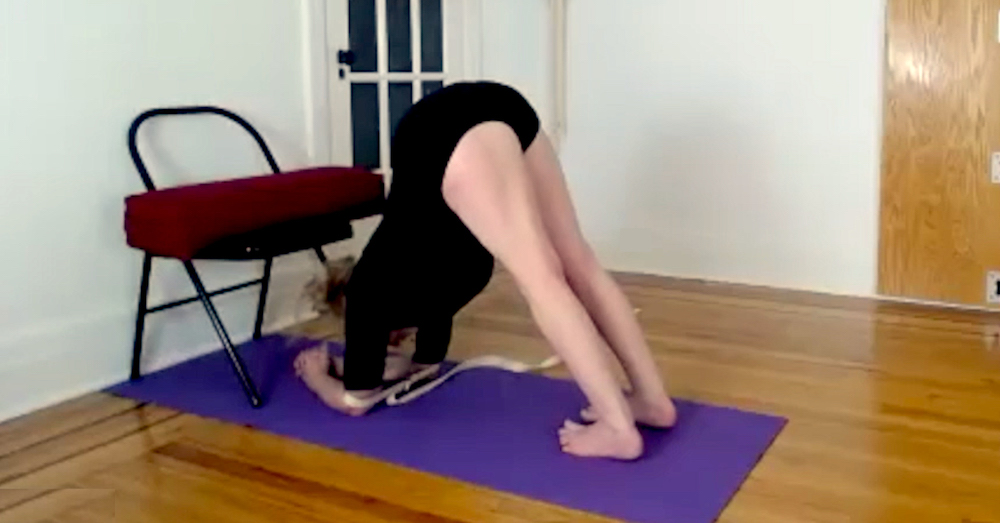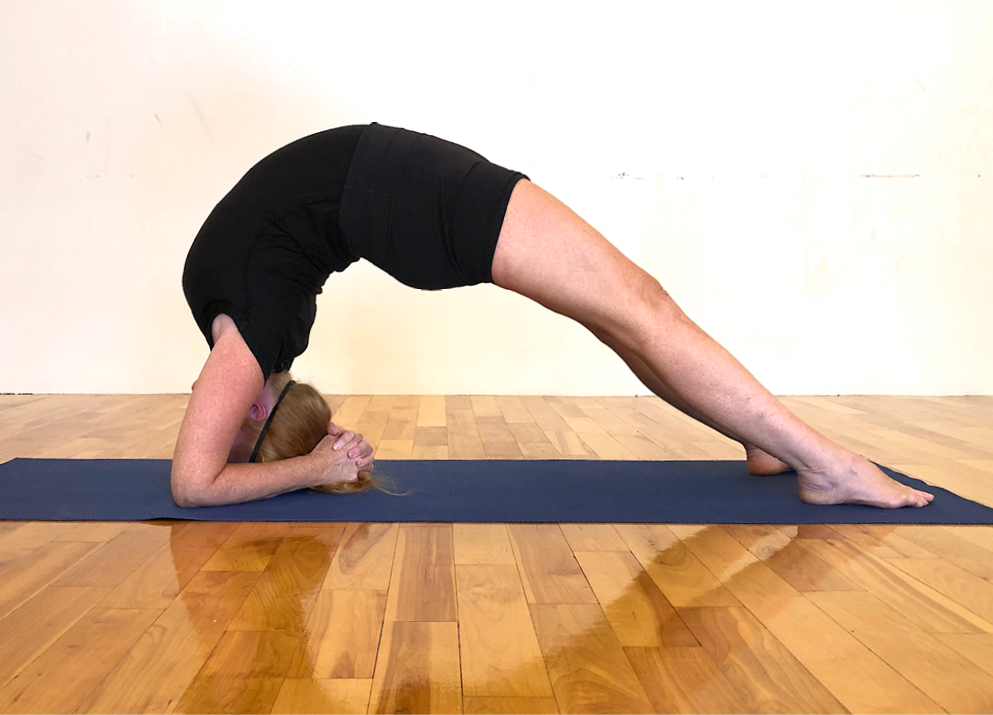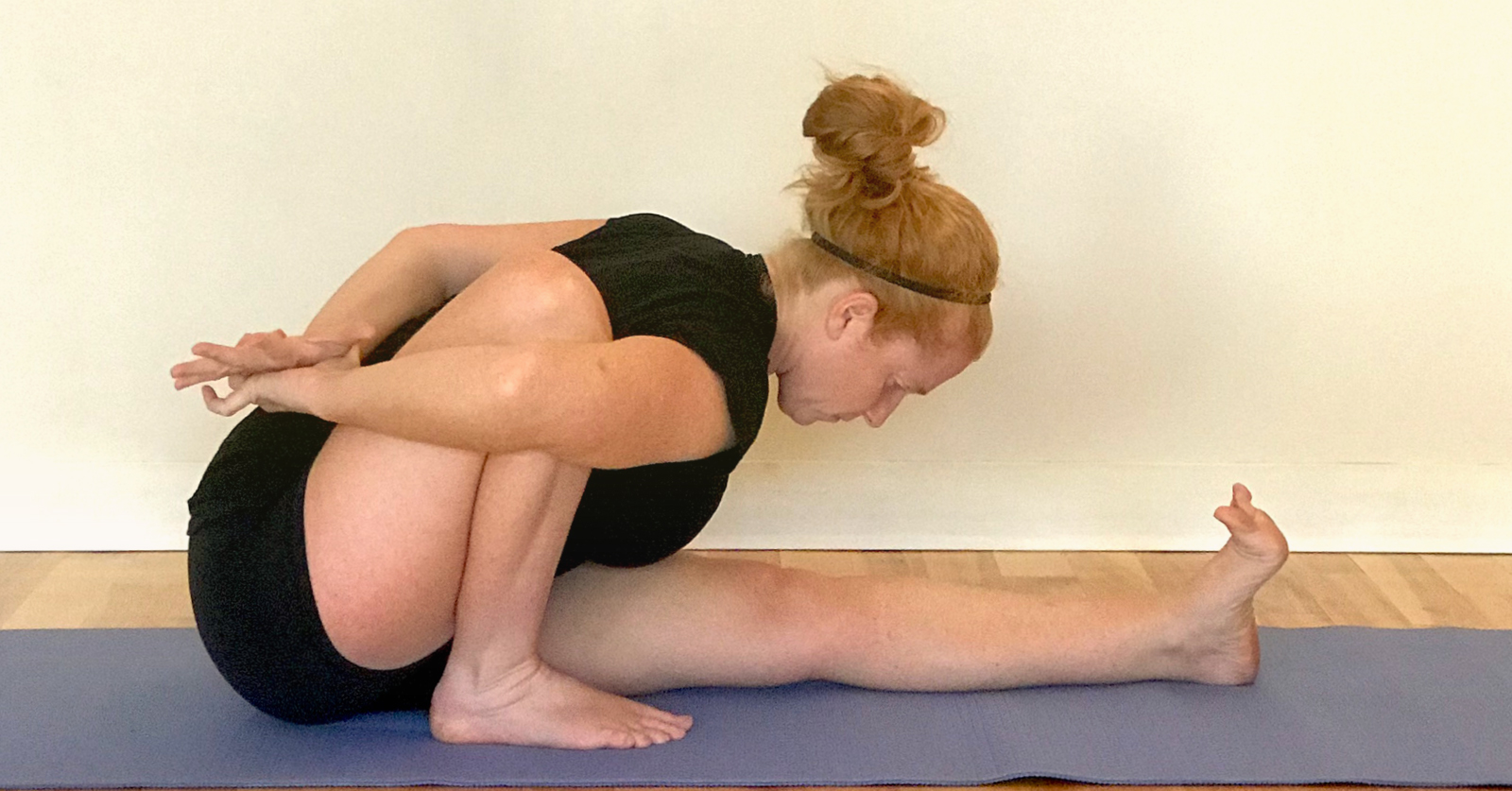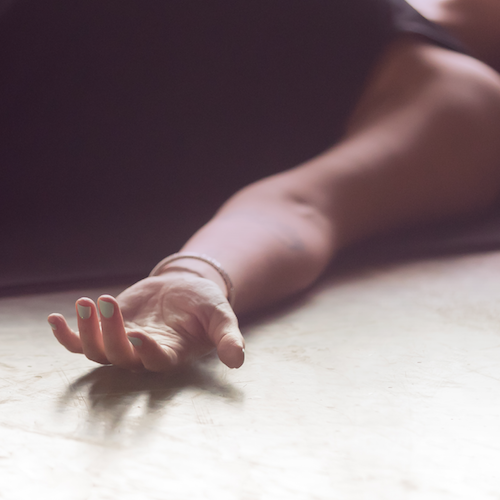Yoga Corner: Asana + Variations
The poses demonstrated here by Donna are intended to show the classical version of the pose, as well as the variations we use at United Yoga Montreal. Variations are introduced for a variety of reasons and purposes to aid in deepening our student’s understanding of the pose.
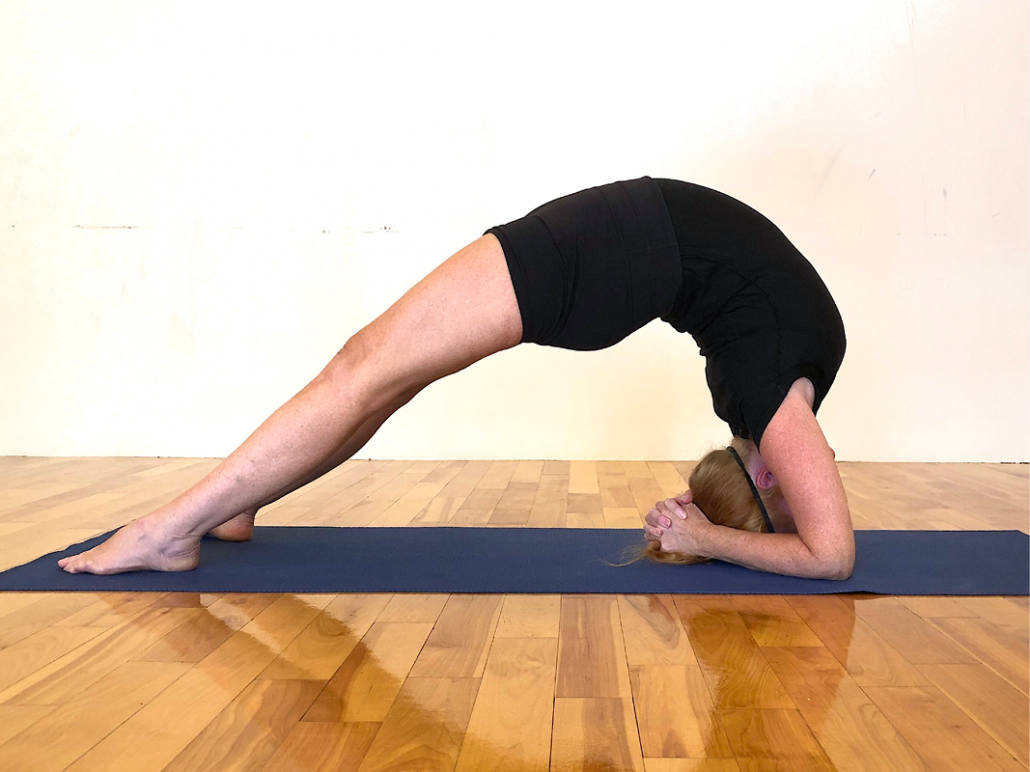
Dwi Pada Viparita Dandasana:
(Two-Legged Inverted Staff Pose)
This exhilarating posture is a deep chest, shoulder and hip opener. It helps strengthen and stretch the hamstrings and quadriceps, toning the entire leg to it’s fullest. It also helps to lengthen the spine and strengthen the neck muscles.
Dwi Pada Viparita Dandasana is considerered a very deep advanced Back Bending posture. For most students this pose is too challenging to achieve or even attempt. So here are some supported variations to work with so you can work towards this posture safely and playfully.
Click photos to enlarge…
Variation 1 – In this variation; the crown of the head, elbows, forearms and wrists are placed on the floor as in Sirsasana. The bottom tip of the shoulder blades, the lumbar spine, the sacrum and the back of the thighs are supported by a vertical bolster that is placed on top and in the middle of a horizontal bolster. There is also a block that is placed mid height in back of the horizontal bolster and under the vertical bolster to help open the chest more. The belt around the mid thighs helps keep the legs moving in from the outer thighs to the inner thighs (adduction) and also helps to keep the legs moving inward (internal rotation). The feet are placed at the wall with the big toes touching and the inner heels slightly apart so that the little toes are in line with the outer heels. All 4 corners of the feet are pressing into the wall to help with the action of fully extending the legs.
Variation 2 – In this variation, the emphasis is in placing the upper part of the shoulder blades on the front edge of the chair seat. This allows the head to hang while hands, wrist and arms are placed like in Sirsasana. The mid to upper part of the sacrum is also supported by the chair but sit bones and tailbone are off of the chair (not supported). A belt placed around the mid-thighs encourages adduction (outer thighs moving toward the inner thighs), and internal rotation of the legs. The feet are placed at the wall with the big toes touching and the inner heels slightly apart, ensuring the little toes are in line with the outer heels. All 4 corners of the feet press into the wall, helping to fully extend the legs.
Variation 3 – In this variation, the crown of the head is supported by the bolster. The hands and wrists are reaching for the chair legs and holding the side of the bolster. The elbows are pressing down into the bolster to lengthen the upper arms and they are also squeezing into the bolster to help with adduction and external rotation of the upper arms. The bottom tip of the shoulder blades, the sacrum, and the upper part of the back of the thighs are supported by the chair. A belt placed around the mid-thighs encourages adduction (outer thighs moving toward the inner thighs), and internal rotation of the legs. The feet are placed at the wall with big toes touching and the inner heels slightly apart, ensuring the little toes are in line with the outer heels. All 4 corners of the feet press into the wall, helping to fully extend the legs.
Variation 4 – This variation is done using a sling around the mid sacrum to protect the lumbar spine. A belt is used to tighten the sling to bring the outer hips up and then inward towards one another to stabilize the pelvis. The feet are placed at the wall hip-width apart and parallel to one another. All 4 corners of the feet are pressing into the wall helping to fully extend the legs. The mid and upper torso is fully extending back in space with no support to fully express the deep backbend. The head is supported with the hands. Hands, wrists and arms are placed like in Sirsasana.
Variation 5 – This variation is done using a sling around the mid sacrum to protect the lumbar spine. A belt is used to tighten the sling to bring the outer hips up and then inward towards one another to stabilize the pelvis. The feet are placed at the wall hip-width apart and parallel to one another with the heels on the floor. All 4 corners of the feet press into the wall, helping to fully extend the legs. The mid and upper torso is fully extending back in space with no support to fully express the deep backbend. The head is supported on the floor; the hands, wrist and arms that are placed like in Sirsasana.
Prepared and demonstrated by Donna Read
Donna would like to express gratitude to her teacher, Hart Lazer and to his teachers for their inspiration and wisdom.

